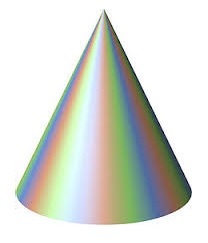
- BabylonJS 教程
- BabylonJS - 主頁
- BabylonJS - 介紹
- BabylonJS - 環境設定
- BabylonJS - 概述
- BabylonJS - 基本元素
- BabylonJS - 材質
- BabylonJS - 動畫
- BabylonJS - 攝像機
- BabylonJS - 光照
- BabylonJS - 引數化形狀
- BabylonJS - 網格
- VectorPosition 和 Rotation
- BabylonJS - 貼花
- BabylonJS - Curve3
- BabylonJS - 動態紋理
- BabylonJS - 視差貼圖
- BabylonJS - 鏡頭光暈
- BabylonJS - 建立螢幕截圖
- BabylonJS - 反射探頭
- 標準渲染管道
- BabylonJS - ShaderMaterial
- BabylonJS - 骨骼骨架
- BabylonJS - 物理引擎
- BabylonJS - 播放聲音和音樂
- BabylonJS 有用資源
- BabylonJS - 快速指南
- BabylonJS - 有用資源
- BabylonJS - 討論
BabylonJS - Mesh FacetData
小平面資料佔用大量記憶體,此功能預設未啟用。要啟用它,我們需要根據需要建立一個網格,並向其更新小平面資料。考慮以下示例來理解此操作 −
mesh.updateFacetData();
網格可以含有一些平面。例如,一個盒子有 6 個面,因此有 6 個平面的正方形面。它的每個面都在 WebGL 級別繪製,有 2 個三角形。
var positions = mesh.getFacetLocalPositions(); // returns the array of facet positions in the local space var normals = mesh.getFacetLocalNormals(); // returns the array of facet normals in the local space
使用法線的座標,我們在球面上繪製出三角形法線的小平面。
演示
<!doctype html>
<html>
<head>
<meta charset = "utf-8">
<title>BabylonJs - Basic Element-Creating Scene</title>
<script src = "babylon.js"></script>
<style>
canvas {width: 100%; height: 100%;}
</style>
</head>
<body>
<canvas id = "renderCanvas"></canvas>
<script type = "text/javascript">
var canvas = document.getElementById("renderCanvas");
var engine = new BABYLON.Engine(canvas, true);
var createScene = function() {
var scene = new BABYLON.Scene(engine);
scene.clearColor = new BABYLON.Color3(0.35, 0.35, 0.42);
var camera = new BABYLON.ArcRotateCamera("Camera", 0, 0, 0, BABYLON.Vector3.Zero(), scene);
camera.attachControl(canvas, true);
camera.setPosition(new BABYLON.Vector3(0.0, 3.0, -8.0));
var light = new BABYLON.HemisphericLight('light1', new BABYLON.Vector3(0, 1, 0), scene);
light.intensity = 0.2;
var pl = new BABYLON.PointLight('pl', camera.position, scene);
pl.intensity = 0.9;
var mesh = BABYLON.MeshBuilder.CreateIcoSphere("m", {radius: 2.0}, scene);
mesh.updateFacetData();
var positions = mesh.getFacetLocalPositions();
var normals = mesh.getFacetLocalNormals();
var cone = [];
var matcone = [];
var texture = [];
for (var i = 0; i < positions.length; i++) {
console.log(positions[i].add(normals[i]).x);
matcone[i] = new BABYLON.StandardMaterial("mat1", scene);
matcone[i].alpha = 1.0;
matcone[i].diffuseColor = new BABYLON.Color3(0.9, 0, 2);
texture[i] = new BABYLON.Texture("images/cone.jpg", scene);
matcone[i].diffuseTexture = texture[i];
cone[i] = BABYLON.MeshBuilder.CreateDisc("disc", {tessellation: 3}, scene);
cone[i].position= new BABYLON.Vector3(positions[i].add(normals[i]).x,positions[i].add(normals[i]).y,positions[i].add(normals[i]).z);
cone[i].material = matcone[i];
}
return scene
};
var scene = createScene();
engine.runRenderLoop(function() {
scene.render();
});
</script>
</body>
</html>
輸出

在此演示中,我們使用了圖片 cone.jpg。這些圖片會儲存在本地 images/ 資料夾中,下面也會貼上以供參考。你可以下載一張你選擇的圖片,並在演示連結中使用。
images/cone.jpg

babylonjs_mesh.htm
廣告